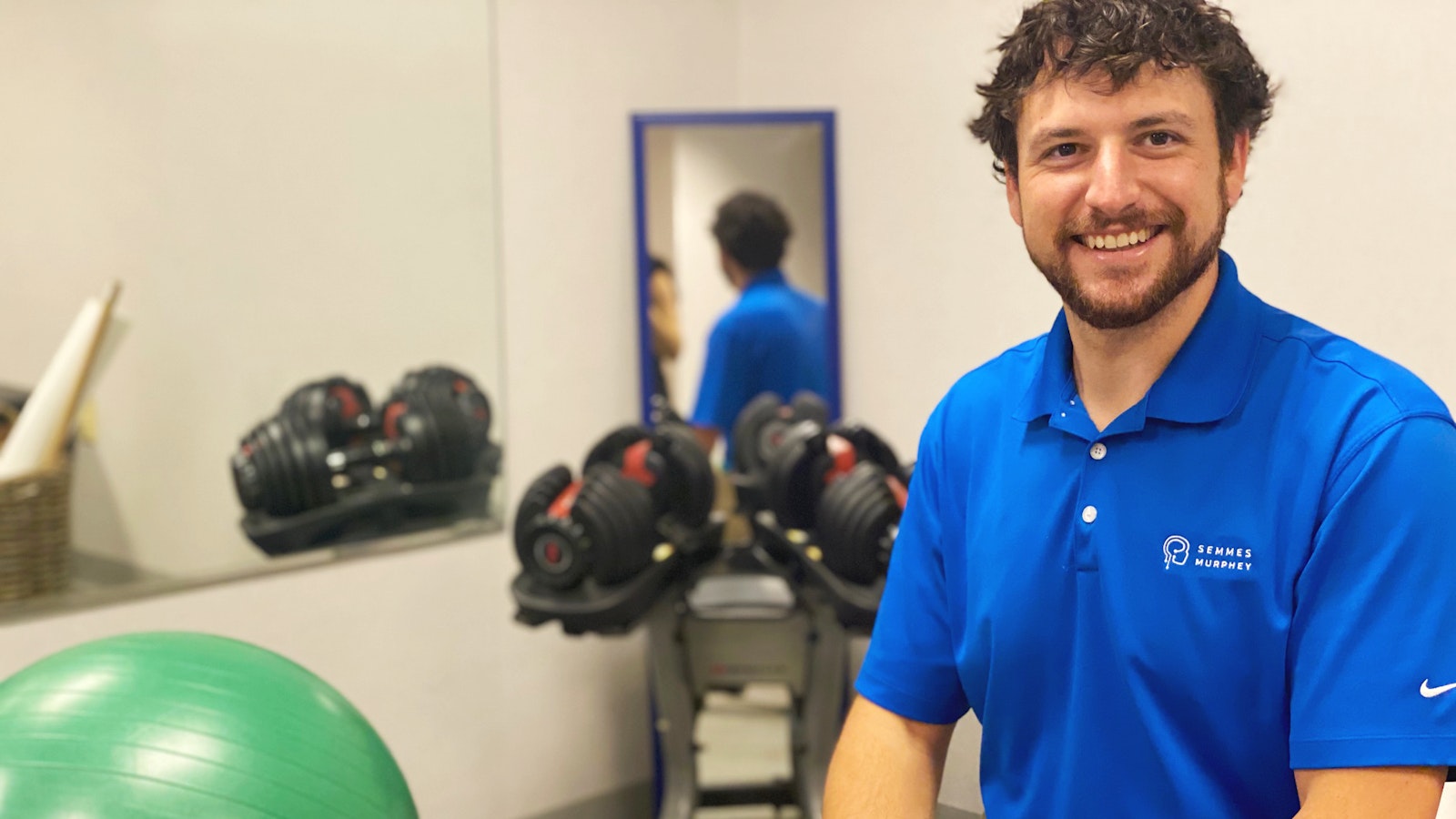Articles
Oct 20, 2020
Physical Therapy vs. Opioids - Taking Advantage of Your Body's Natural Ability to Address Pain.
We checked in with physical therapist Eric Goldberg to learn how to take full advantage of our body's natural pain relievers.
Two components of Physical Therapy, patient education and exercise, are often the keys to limiting opioid use and creating a better quality of life.
October is National Physical Therapy Month, so it's the perfect time to take a closer look at this profession's role in our holistic approach to patient care at Semmes Murphey Clinic.
For many conditions, patient education is the key to long-term healing. It can be tempting for chronic pain sufferers to opt for powerful pain medications (typically opioids such as hydrocodone, oxycodone, etc.) as a quick fix. However, research shows this isn't the best solution for long term relief.
Why? Because opioids are addictive, come with serious side effects, and aren't very effective against chronic, non-cancer-related pain. We checked in with Eric Goldberg, Physical Therapist at Semmes Murphey Clinic, to learn more.
"The most common side effects from opioids are addiction, dependence, constipation, nausea, and sedation or drowsiness," Eric says. "These can quickly interfere with a patient's lifestyle and can inhibit long-term pain relief. The good news is that the human body produces natural opiates that are equally as effective as synthetic medicines. In some cases, natural opiates are more effective than synthetic opiates when it comes to addressing pain."

Natural vs. Synthetic Opiates
The human brain produces natural opiates known as endorphins, enkephalins, and dynorphins (among others). Their release can be triggered by various activities, such as exercise, or eating a delicious meal, meditating, or laughing. When the brain releases these chemicals, they are picked up by receptors in the brain and spinal cord and decrease or inhibit our perception of pain. You may have heard of a "runner's high?" That's simply the flood of endorphins released by exercise that bring a profound sense of pleasure and well-being.
Synthetic opioids mimic the natural ones and attach to these same receptors. The problem is that they come with the side effects mentioned above. Eventually, they can change brain chemistry, so the endorphin system stops working properly. Synthetic opioid use makes the brain insensitive to "normal" sources of pleasure. And, over time, it takes much stronger doses to generate the same pain relief.
As a result, the Centers for Disease Control and Prevention (CDC) guidelines say that opioids should not be considered first-line or routine therapy for chronic musculoskeletal and non-cancer-related pain. Instead, the CDC recommends conservative care, which includes physical therapy.

The Benefits of Physical Therapy
At Semmes Murphey Clinic, our physical therapists educate patients about the nature of their pain and develop a plan for an improved quality of life. Education is key because pain can lead to fear, anxiety, depression, and stress. Getting caught in this cycle can lead to our pain feeling even worse.
"Every patient is different, but techniques such as exercise, massage, stimulation, and heat/cold application help modulate pain as the body heals," Eric says. "We are very tuned in to our patients. We listen to them and work with them closely to determine what each individual needs. Lifestyle factors, such as sleep habits, diet, and physical activity level, are all factors to consider when creating a treatment plan."
"As physical therapists, we are all very passionate about empowering our patients. We want to empower them physically while coaching them through sessions, but also mentally. When we can arm our patients with more knowledge about their body and the nature of the pain they feel, we can help guide them to their goals and long-term health."
Treatments plans vary by patient to address specific needs, challenges, and goals. Physical Therapists can help patients improve mobility, manage pain, recover from injuries, and even strengthen muscles to prevent future injuries. The goal of all departments, including Physical Therapy at Semmes Murphey Clinic, is long term improved quality of life for our patients. is much better served through physical therapy.
If you would like to visit one of our specialists at Semmes Murphey Clinic, please request an appointment below.
